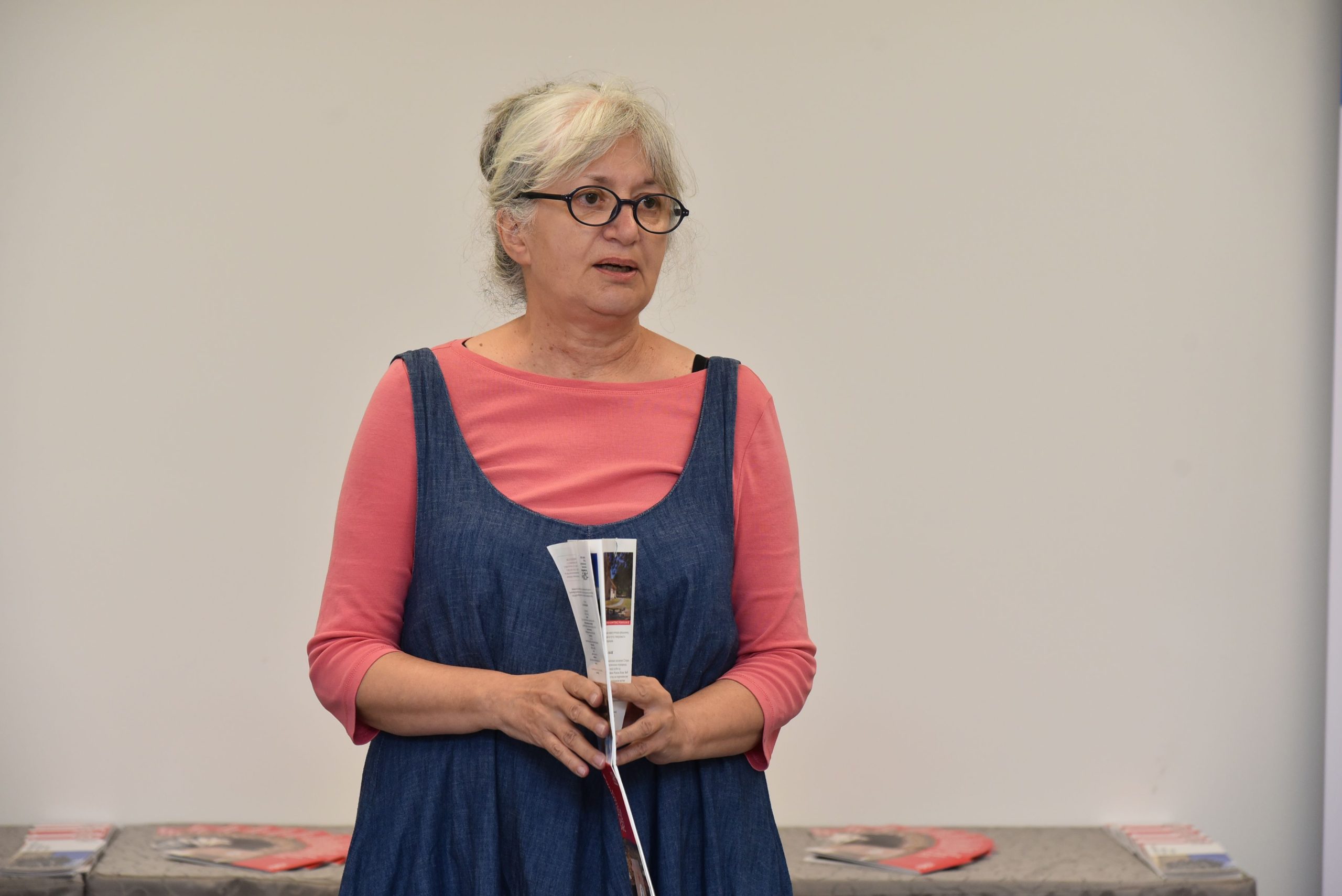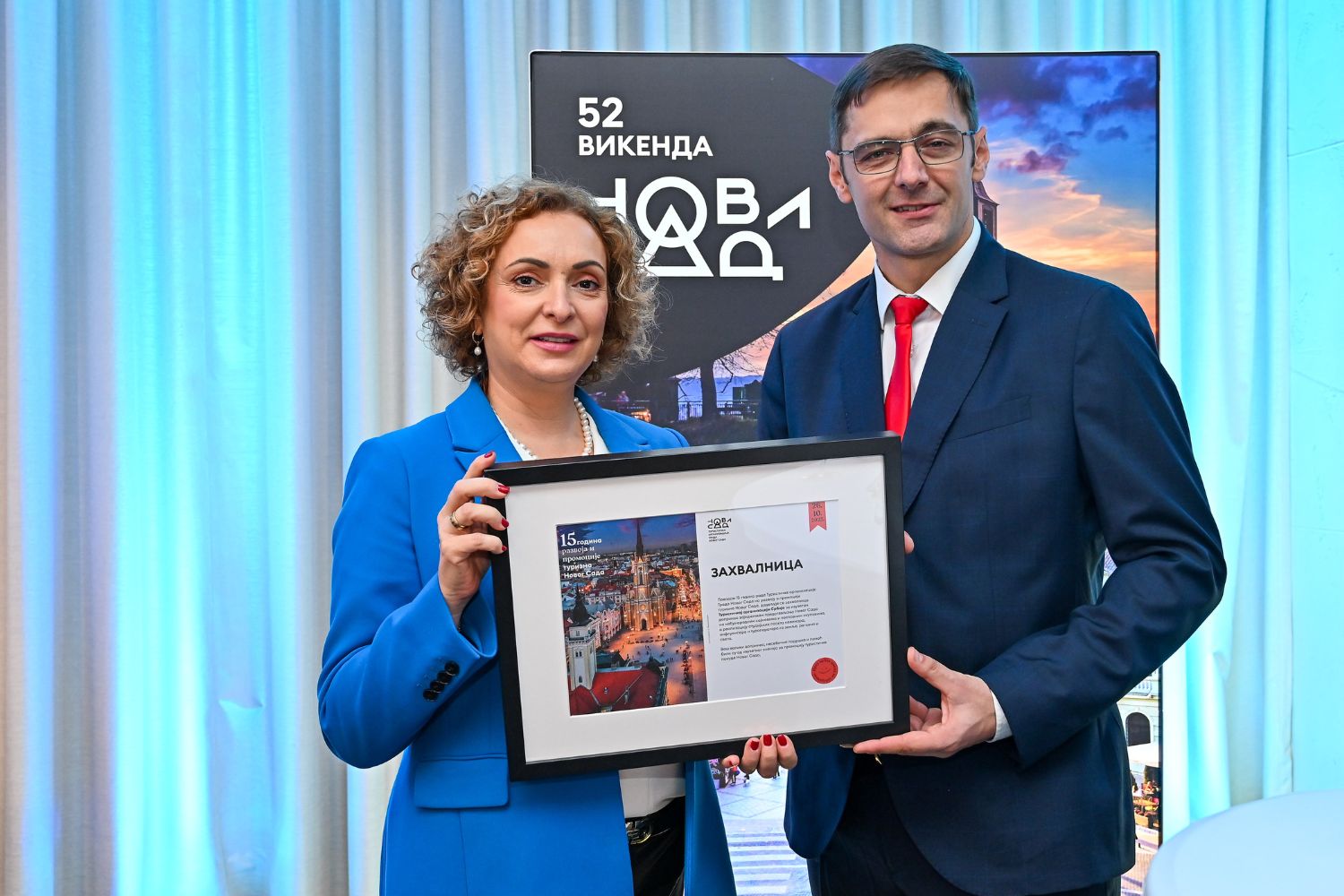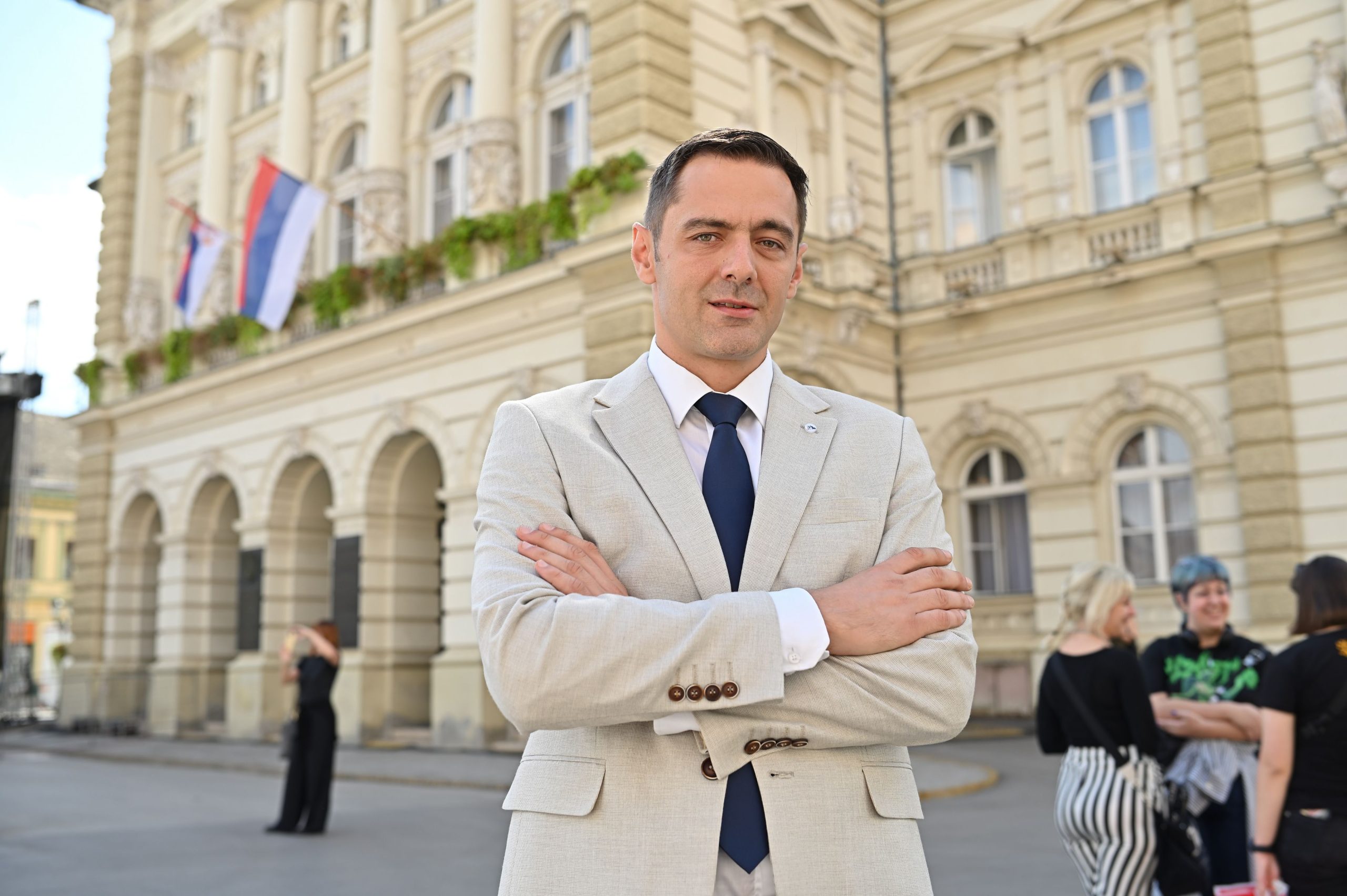FROM A PERSONAL POINT OF VIEW: Gordana Stojaković, Tourism Organization of the City of Novi Sad
Using known (scientific) tools in terms of tourist valorization of the Novi Sad area, we have always been partly the voice of our fellow citizens who love and protect their own city.
You have been in tourism for more than 30 years, you have completed numerous projects and have vast experience. How important are field work, communication and cooperation with the tourism industry in the development of tourism product?
– Already with the first projects of the Tourism Organization of the City of Novi Sad, segments of successful work were established: field research, cooperation with the tourism industry and appropriate institutions at the city’s provincial and republic level, market research, presentation of potential and products and, what is extremely important, part of our most successful projects – a kind of cooperation with the citizens of Novi Sad. Field research is the indispensable basis on which the Tourism Organization of the City of Novi Sad bases its presentation of the potential and products of the Novi Sad tourist area. It is the starting position for many plans that bring multiple benefits. On the one hand, the employees of the Tourism Organization of the City of Novi Sad gain direct experience of the tourism products, attractions and events they recommend, and on the other hand, in communication with individuals, economic actors, companies and institutions, which determine the operation of the tourism industry in the Novi Sad area, we influence the creation of new products, new markets and the preservation of natural and created heritage. We tried our best to record all the tourism potentials, visit them in the field, talk to people, and make a publication or a map as a result of that work. Our first activities were related to the nautical potential of the Danube area of Novi Sad, and then also related to Fruškogorje, which will continue to be a permanent inspiration for projects. All these activities have resulted in novelties in the tourist offer in a way that they can be introduced into everyday life through presentation to the citizens of Novi Sad through organized free tours, exhibitions, story and photo contests, information shared through social networks and specialized magazines, etc. Using known (scientific) tools in terms of tourist valorization of the Novi Sad area, we have always been partly the voice of our fellow citizens who love and protect their own city.
During your work at TONS, you were in contact with numerous tourists from all over the world. What did you learn from them and how useful was the information you received from them in your work on the further development of the tourism product?
– Conversations with foreigners are inspiring, and information and opinions depend on who those tourists are. For the Scandinavians and the Dutch, nature is the focus, and in that sense, the area of Fruška gora met their expectations. Some others are interested in gastronomy and rural atmosphere, as was the case, for example, with a tourist from Florence, who absorbs art of world importance in her city. The Tourist Information Center, and later the Tourism Organization of the City of Novi Sad, has always been a specific platform for communication with people who came to our city. It was interesting to see and find out how they see us, and on the other hand, we had a new attitude towards what our strengths are, which later determined our work and helped us define new tourism products that we successfully introduced into the new life of the city. Nevertheless, domestic tourism must be the basis of all tourism. Certainly, Novi Sad has always been one of the favorite destinations for school and youth excursions, because many children and young people, who live south of the Sava and Danube, can perhaps see a synagogue, Catholic and Protestant churches here for the first time. Novi Sad is a city where religious and ethnic tolerance is already taught through the urban configuration. There are: Matica srpska, Matica srpska Gallery, museums, Petrovaradin fortress with its stories, as indispensable stops for many tourist groups. It is not unimportant whether it is senior, youth or family groups, because each group has specific needs and expectations, and we have tried to design proposals for all of them, in relation to the seasons, for every need and occasion. All that has been said is a confirmation of the great content of the Novi Sad tourist area.
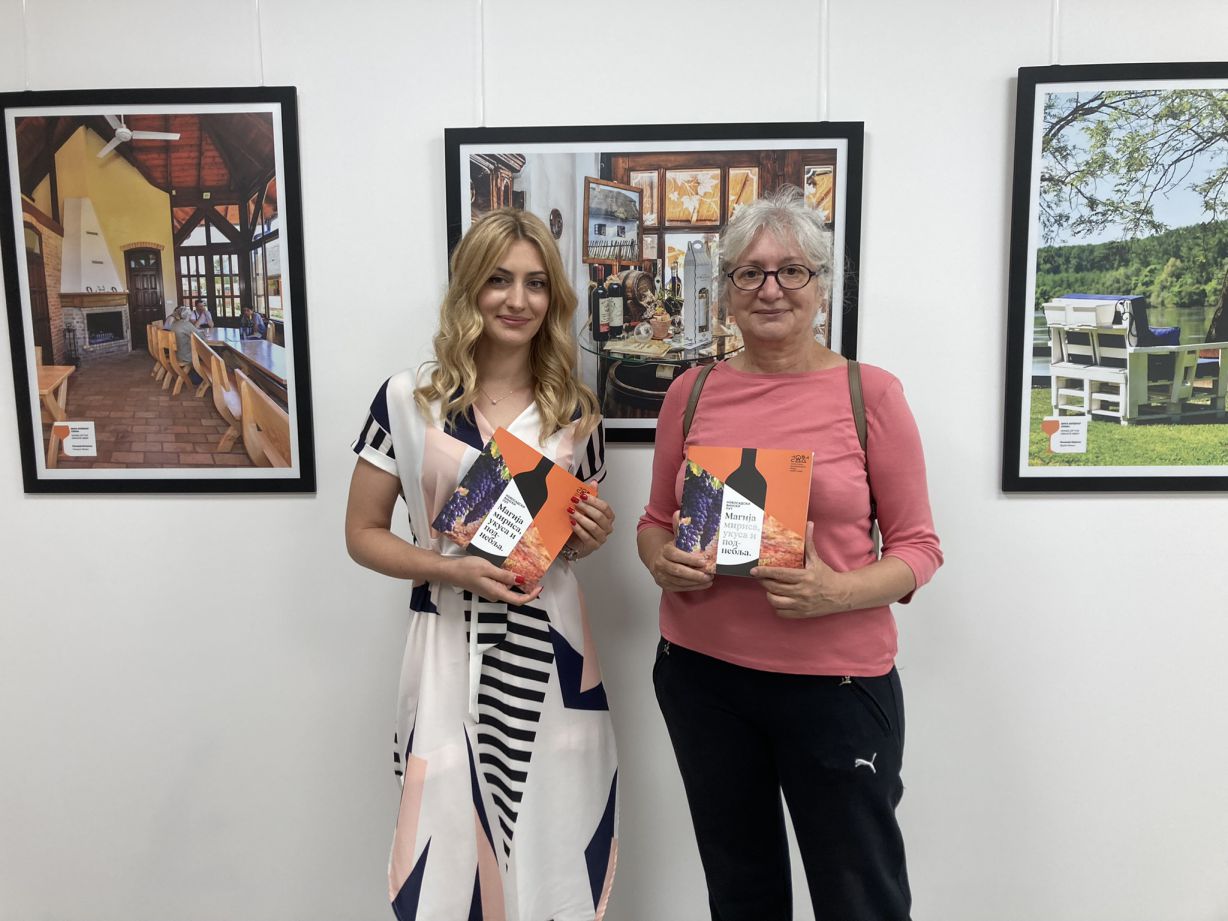
You’ve spent a lot of time in the field with colleagues from TONS and collaborators. What projects and tourism products resulted from the field work? What does it look like and what does it include?
We traveled all the way across more than 1,000 kilometers on Fruška gora. Several thousand photos were taken on that research journey, which testified to the beauty of the landscape and successful tourist stories, of which about 100, the best for us, were presented in the Museum of Vojvodina through the well-visited exhibition “All colors of Fruška gora”. Then, we explored Fruška gora in certain segments. I was especially interested in the ride on the ferry across the Danube. We started from Futog, from where we took the ferry to Beočin and continued sailing along the Srem side of the Danube, which is otherwise rich in wineries. Traveling by ferry across the Danube is a unique experience, especially for cyclists, hikers, all lovers of those small and big beauties that are found along the way, but are not always recorded. As part of that fieldwork, we visited more than 60 wineries, which differ not so much in the quality of the wine, but in who the hosts are. We listened to inspiring stories about family and (or) large wineries, which have large vineyards and successful oenologists, and all of them produce wines awarded at prestigious world exhibitions. Then, we realized that there are many young women who own wineries or are the main oenologists in the family winery. So, women took the initiative, which is very interesting, because in that case, women combine great creativity and seriousness. We were fascinated to find young people who had returned from abroad and continued the family tradition. Family stories were also materialized by the fact that certain wine labels were named after grandmothers from the family, and they are, together with grandfathers, responsible for passing on the love of wines to the younger generations. Because of all those warm human and wine stories and the magic that was created, we named the project “Magic of smells, tastes and climate”.
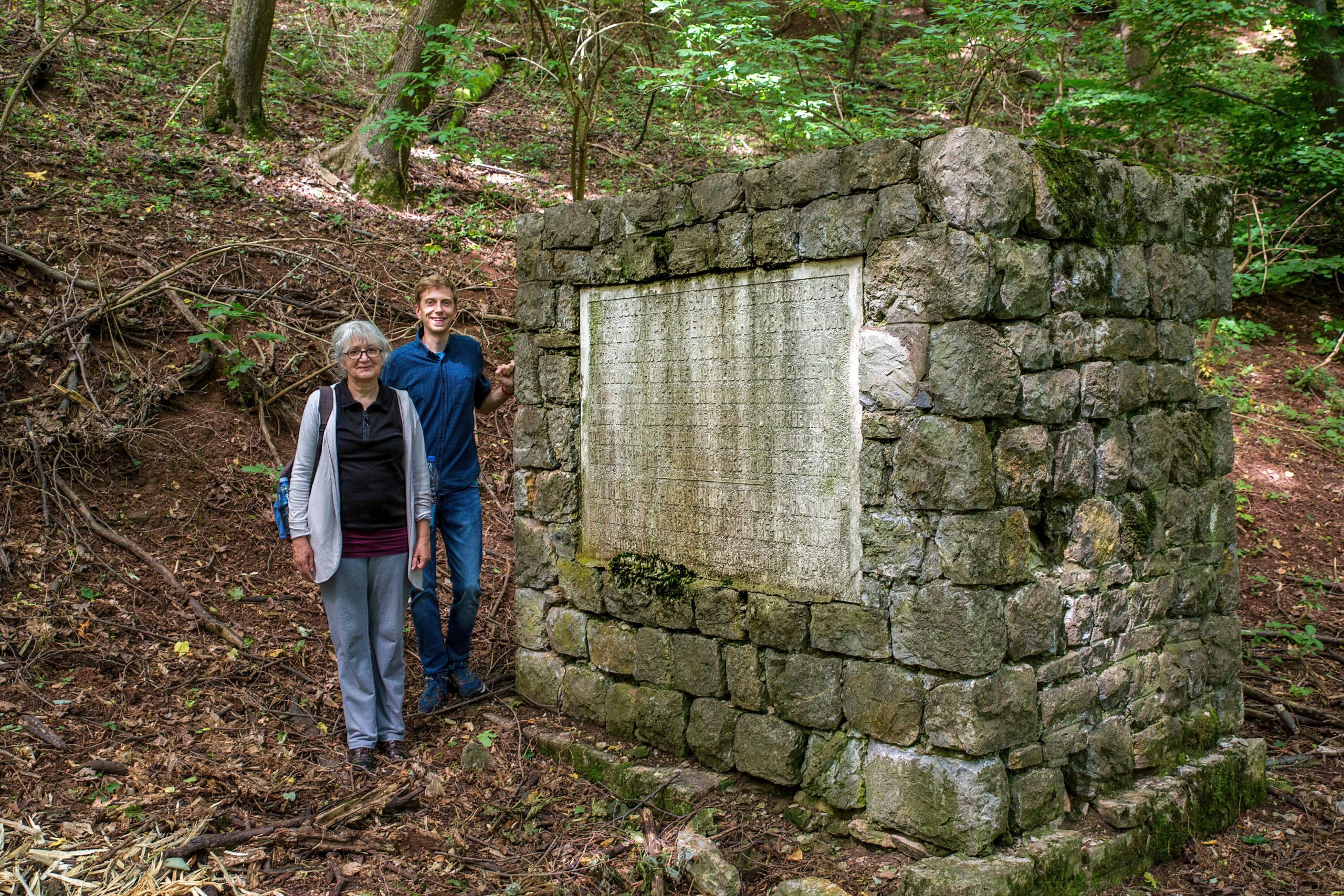
Novi Sad was among the first European cities to have the tourism products “Jewish Novi Sad” and “Novi Sad from a female perspective”. What were the tourists’ reactions and interest in those topics?
– The map from a female perspective has existed since 1999, “The female names of Novi Sad” as a guide for alternative tours and Jewish Novi Sad since 2014 and 2015 respectively. The “Jewish Novi Sad” tour promotes Jewish heritage in the broadest sense, these are not only stories about the Synagogue, but also about where the Jewish Cultural Center was, the Home for the Elderly, who the famous Jews of Novi Sad were, etc. Since Belgrade has been connected with Tel Aviv by direct flights, tours with tourists from Israel have become more frequent. As for the tour from a female perspective, it is specific, because the heritage of women in Novi Sad was mostly unknown. I will only say that the greatest benefactor among Serbs was Marija Trandafil, and that the first request for the establishment of a Women’s Humanitarian Organization through the Jewish municipality, but outside of her own organization, was submitted by Judita Horovic. Based on their efforts, we know that the women of Novi Sad, in the fight for women’s rights and the improvement of women’s living conditions, went side by side with European women’s rights fighters and that we were then part of Europe, without fences. People are mostly positively surprised and ask how they didn’t know that. They don’t know, because history is written mainly as eventful or political, and women entered the public sphere only from the middle of the 19th century, when they were allowed to enroll in high schools and colleges, when they could qualify for many professions. But, there is always one big “but”, on which this whole story is based, and that is that in the Habsburg Monarchy, women could inherit and had business ability. Since they inherited and very often ran their family businesses, they were also donors, benefactors, they also formed institutions, many of them left money and property for the education of female children and thus laid the foundations for many women’s organizations and many good things that women managed to do first here and much more here than south of the Sava and Danube.
In the period when the Tourist map of Fruška gora was made, it was concluded that the heritage of the National Liberation Struggle was not processed from the tourist aspect. That is why the “Insurgent Fruška gora” project was later launched and implemented. In your opinion, how important is this project for tourism?
At the suggestion of our director, the “Insurgent Fruška gora” project was created. We visited the area around the transversal of Fruška gora, that is, the Partizan road, as well as the nearby villages. We documented the heritage and its condition and warned that a lot of investment is needed to restore it. Parts of that heritage are mostly either part of the excursion site, or those places themselves are the central part of the excursion site. In places where people have died and where green areas have been maintained, for example, you should not light a fire, that is, have barbecue party. On some parts of the monumental heritage, no names are visible, it can be seen that several decades have passed since the last renovation. The entire monumental heritage, which was designed as one well-thought-out unit, needs a comprehensive renovation, as do we, obviously. It is our heritage that we should be proud of. I can say that this project is significant, not only because of pointing out the need to protect the heritage, but also in the context of raising awareness about the importance of getting to know and preserving the entire heritage. Fruška gora is so rich that there will certainly be many more projects related to natural and created heritage.
Field work to successful projects
Getting to know the tourism potential that Novi Sad and its surroundings provide through the first 15 years of work, we discovered the current conditions through field research and learned little-known stories about each tourism product, which we then gladly passed on. After finishing one project, an idea for another always arose, where we continuously worked on development and promotion. In this way, we have presented everything that tourists and local people can visit and that can satisfy all their senses.
Interviewed by: Maja Guzijan

